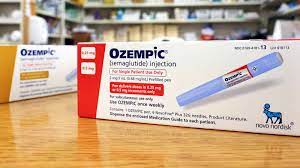Have you ever walked into a doctor’s office with a list of concerns, only to leave feeling unheard and invalidated? If you’ve experienced this, you might have been a victim of a phenomenon known as “medical gaslighting.” This troubling practice is not just a figment of your imagination; it’s a real issue that many individuals, especially women and marginalized groups, encounter within the healthcare system. In this article, we’ll dive deep into the concept of medical gaslighting, its impact, and how to navigate through it.
Table of Contents
- Understanding Medical Gaslighting
- Signs and Examples of Medical Gaslighting
- The Impact on Patients’ Mental and Physical Health
- Factors that Contribute to Medical Gaslighting
- The Role of Implicit Bias in Healthcare
- Navigating Medical Gaslighting: Tips for Patients
- Amplifying Marginalized Voices in Healthcare
- Fostering Better Doctor-Patient Relationships
- Raising Awareness and Advocating for Change
- The Importance of Second Opinions
- Building a Support System: Friends, Family, and Online Communities
- Educating Healthcare Professionals About Medical Gaslighting
- Empowering Patients to Trust Their Instincts
- Holding Institutions Accountable: Policy and Guidelines
- Conclusion: Your Health and Your Voice Matter
Understanding Medical Gaslighting
Medical gaslighting occurs when a patient’s symptoms, experiences, or feelings are downplayed, dismissed, or distorted by medical professionals. This can lead to feelings of self-doubt, frustration, and even worsened health conditions. Victims are made to question their own perceptions, believing that their health concerns are insignificant.
Signs and Examples of Medical Gaslighting
Instances of medical gaslighting can range from a doctor brushing off a patient’s chronic pain as mere stress to attributing a woman’s symptoms to her emotions rather than conducting thorough medical evaluations. For instance, if a woman experiences severe fatigue and is told it’s just because she’s a working mother, that’s a classic case of medical gaslighting.
The Impact on Patients’ Mental and Physical Health
The consequences of medical gaslighting can be dire. Patients may delay seeking help due to fear of being dismissed, leading to worsened health conditions. Mentally, they might experience heightened anxiety, depression, and a loss of trust in the medical community.
Factors that Contribute to Medical Gaslighting
Several factors contribute to the perpetuation of medical gaslighting. Gender bias, racial bias, and societal stereotypes play a significant role. Additionally, the limited time doctors have with patients can sometimes lead to rushed conclusions and misdiagnoses.
The Role of Implicit Bias in Healthcare
Implicit biases are subconscious attitudes and stereotypes that affect decision-making. They can lead to unfair treatment, with marginalized groups often being the most affected. Recognizing and addressing implicit biases is crucial to eliminating medical gaslighting.
Navigating Medical Gaslighting: Tips for Patients
- Educate Yourself: Research your symptoms and conditions.
- Trust Your Intuition: You know your body best.
- Seek Second Opinions: Don’t hesitate to consult another doctor.
- Communication is Key: Advocate for yourself and your health.
Amplifying Marginalized Voices in Healthcare
Marginalized individuals often face higher rates of medical gaslighting. It’s essential to provide them with a platform to share their experiences, fostering understanding and change within the healthcare system.
Fostering Better Doctor-Patient Relationships
Open communication, active listening, and empathy are crucial for building trust between patients and doctors. A strong relationship can prevent medical gaslighting and lead to accurate diagnoses.
Raising Awareness and Advocating for Change
By raising awareness about medical gaslighting, we can encourage individuals to speak up and demand respectful treatment. Medical institutions should implement guidelines to address and prevent gaslighting.
The Importance of Second Opinions
Seeking a second opinion is not a sign of distrust; it’s a way to ensure your health is prioritized. Different perspectives can lead to more accurate diagnoses and treatments.
Building a Support System: Friends, Family, and Online Communities
Having a support system can help individuals cope with the emotional toll of medical gaslighting. Connecting with others who have had similar experiences can provide validation and guidance.
Educating Healthcare Professionals About Medical Gaslighting
Medical education should include training on recognizing and addressing medical gaslighting. Healthcare providers need to understand the importance of listening to and validating their patients’ concerns.
Empowering Patients to Trust Their Instincts
Patients should be empowered to advocate for their health confidently. Your feelings and experiences are valid, and seeking proper medical care is your right.
Holding Institutions Accountable: Policy and Guidelines
Healthcare institutions must establish clear policies and guidelines that address medical gaslighting. Consequences for professionals who engage in such behavior are essential to promote change.
Conclusion: Your Health and Your Voice Matter
Medical gaslighting is a serious issue that undermines the trust and wellbeing of patients. By acknowledging its existence, raising awareness, and demanding change, we can work toward a healthcare system that listens, validates, and respects every individual’s concerns.








